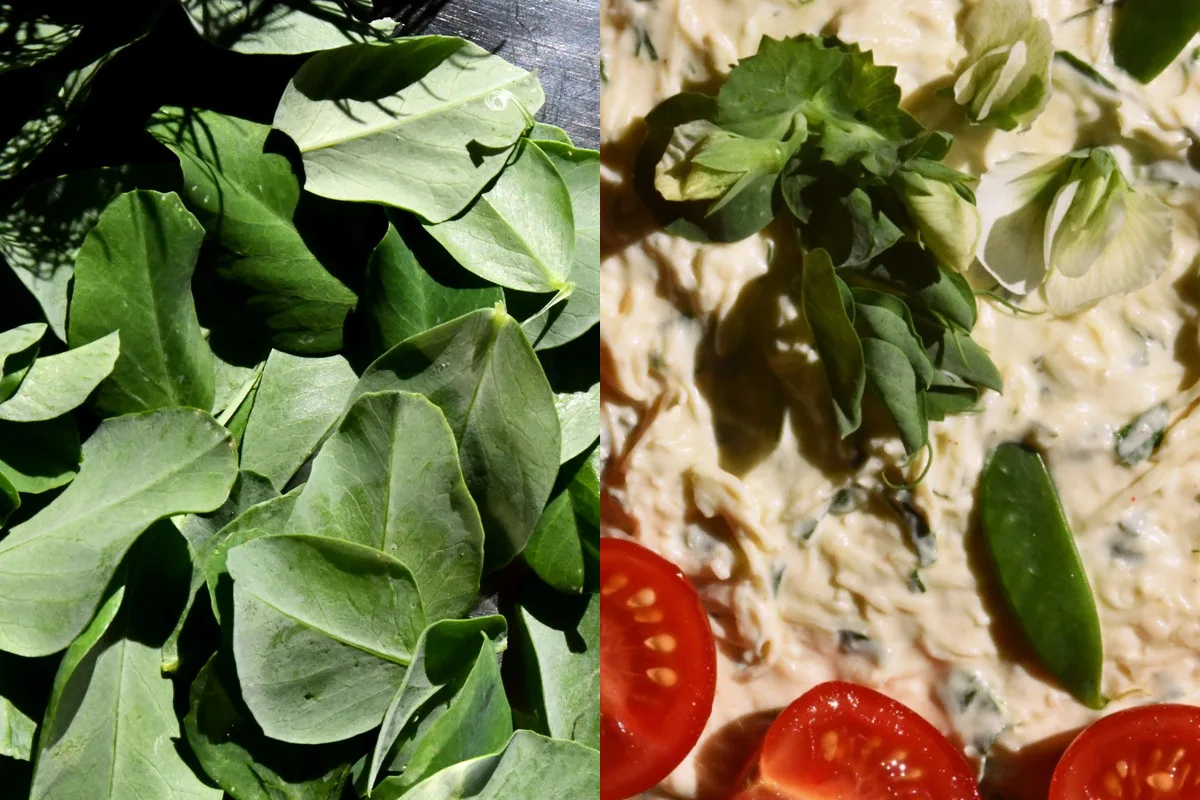
Did you know there are several fantastic reasons for growing peas in your garden? Spoiler alert – you don’t have to grow them for the sheer enjoyment of shelling peas alone. The leaves, shoots and flowers of the pea plant are all edible too.
Why Grow Peas?
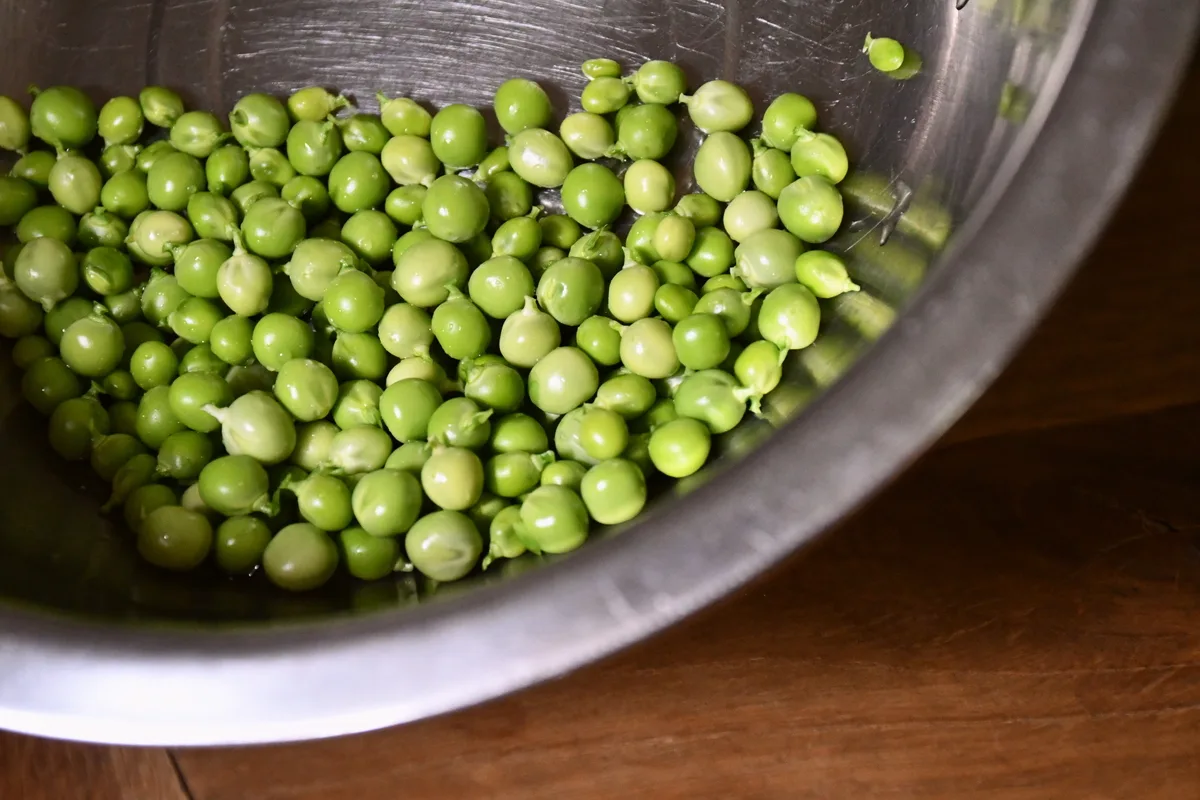
For starters, peas are very easy to grow; just about everyone can accomplish this uncomplicated garden task. Peas pretty much grow on their own with very little care from you – unless they need to be trellised, which is only as difficult as you make it. A few stakes and some string will do.
The fact that they are easy to grow is quickly followed by the reality of peas being one of the earliest seeds to sow in the garden. They are one of 15 seeds to sow outdoors before the last spring frost, falling in line with radishes, onion sets, parsnips and spinach. And you can grow them again in the fall.
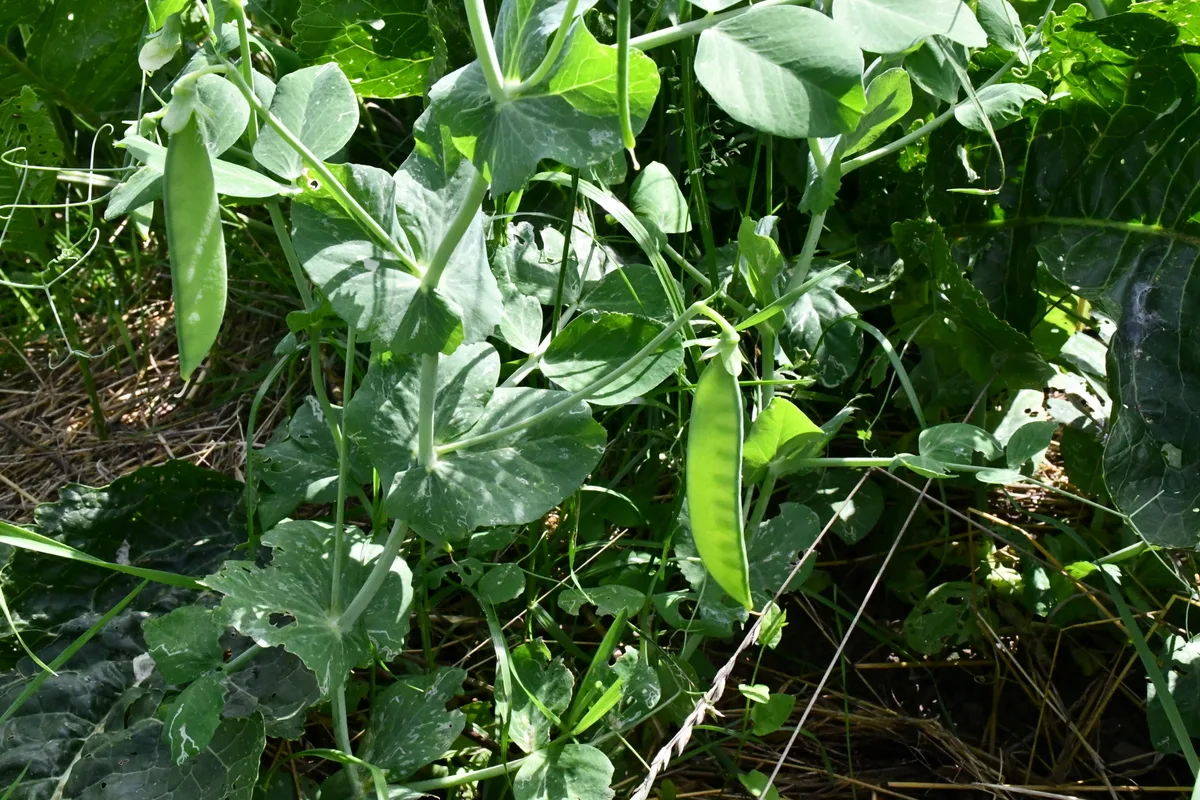
I’m here to tell you that as much as I love to eat spinach, it refuses to grow in our garden to any considerable size without bolting. However, I’ve recently learned that pea leaves are edible, and to some extent, you can use them instead of spinach in many recipes. Since they grow green and lush in the garden, why not eat them?
Naturally, it does help that pea leaves taste rather nice too.
If you are growing snow peas or sugar snap peas, know that the pods are also edible. That’s definitely something to consider when planting a garden to get the most bang for your buck.
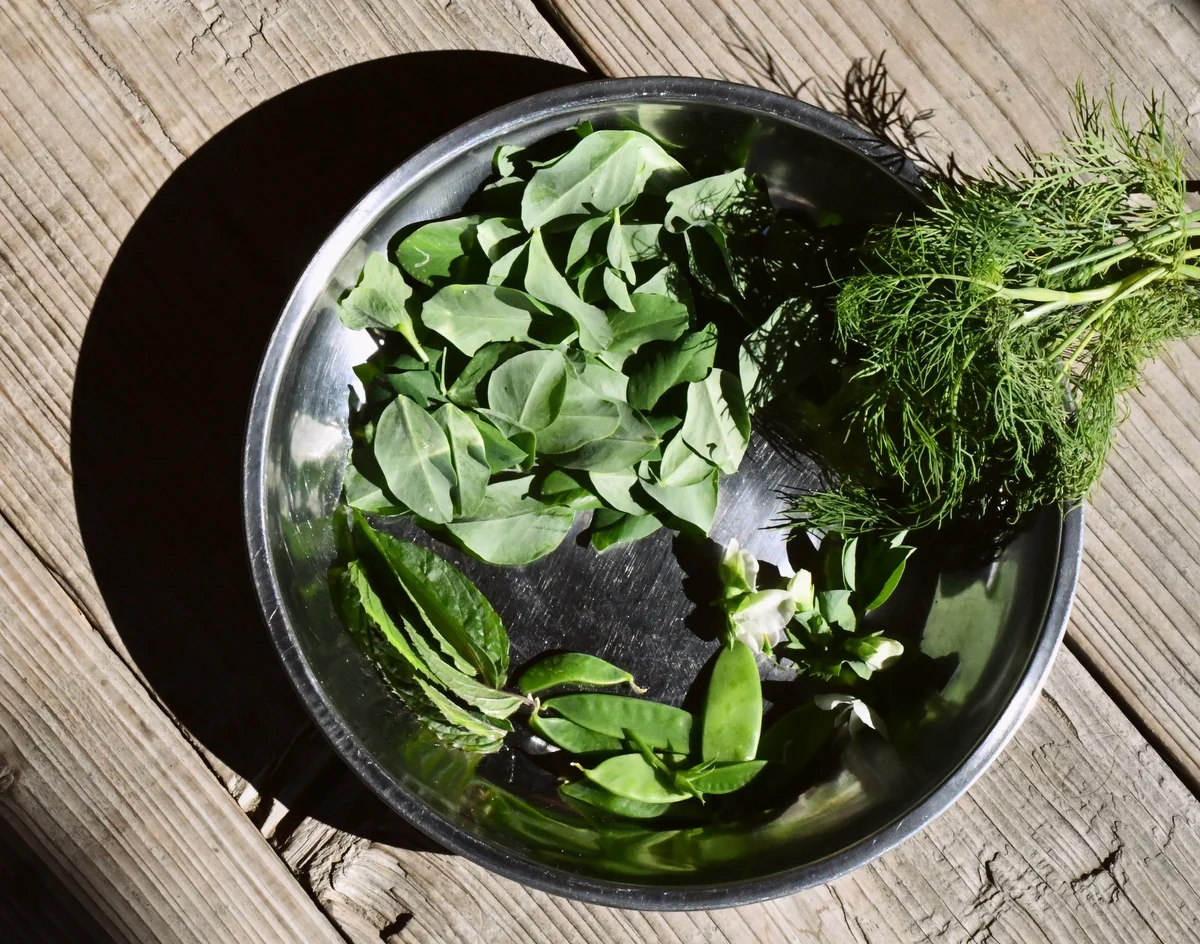
And don’t forget the pea shoots.
When the plants are young, go ahead and snap the end tendrils off right where it joins the main stem. It will form another and keep growing; it’s sort of like pruning your peas to encourage more growth, a win-win situation.
When you begin to look at your garden in a different light, you’ll find all sorts of things that you never knew were edible.
Of course, there will be edible weeds such as purple dead nettle, chickweed, purslane and wood sorrel. If you look even harder, you’ll also realize that young radish leaves and radish pods, kale pods and even buckwheat leaves are edible. It all depends on your openness to trying new-to-you foods.
Two More Reasons to Grow Peas
The more you “prune” and clip back your pea plants for breakfast, the more your peas will produce. As soon as you see the pods are full and heavy, harvest them as well, for it sends a small signal to the plant that its job of producing isn’t yet finished.
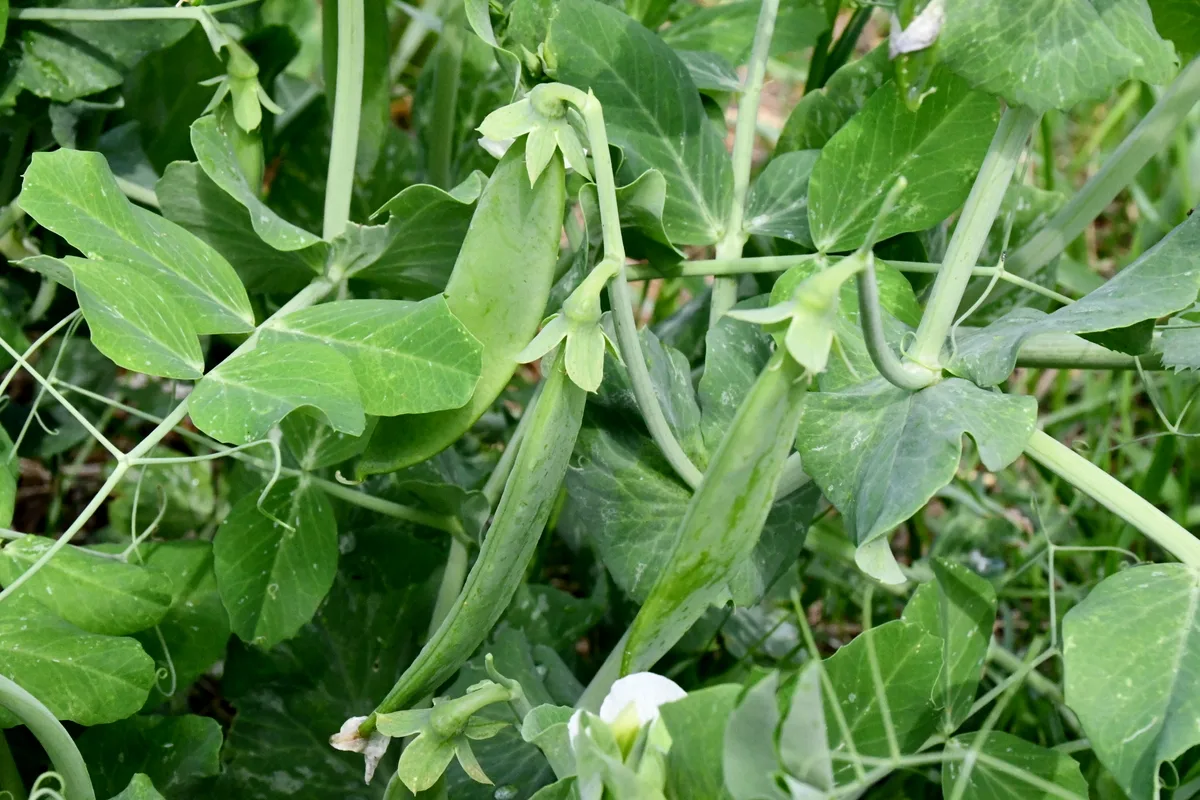
Lastly, you should grow peas in your garden, even in your no-dig garden or raised beds, to help improve the soil. Peas, like all other legumes (vetches, alfalfa, clovers and beans), fix nitrogen in the soil.
Gardening tip:
When the pea season is over, don’t pull the pea plants, roots and all out of the ground. Instead, cut them back at the soil line and allow the roots to decompose in the soil.
Now, let’s get back to the eating of pea leaves.
When To Harvest Pea Shoots and Tendrils
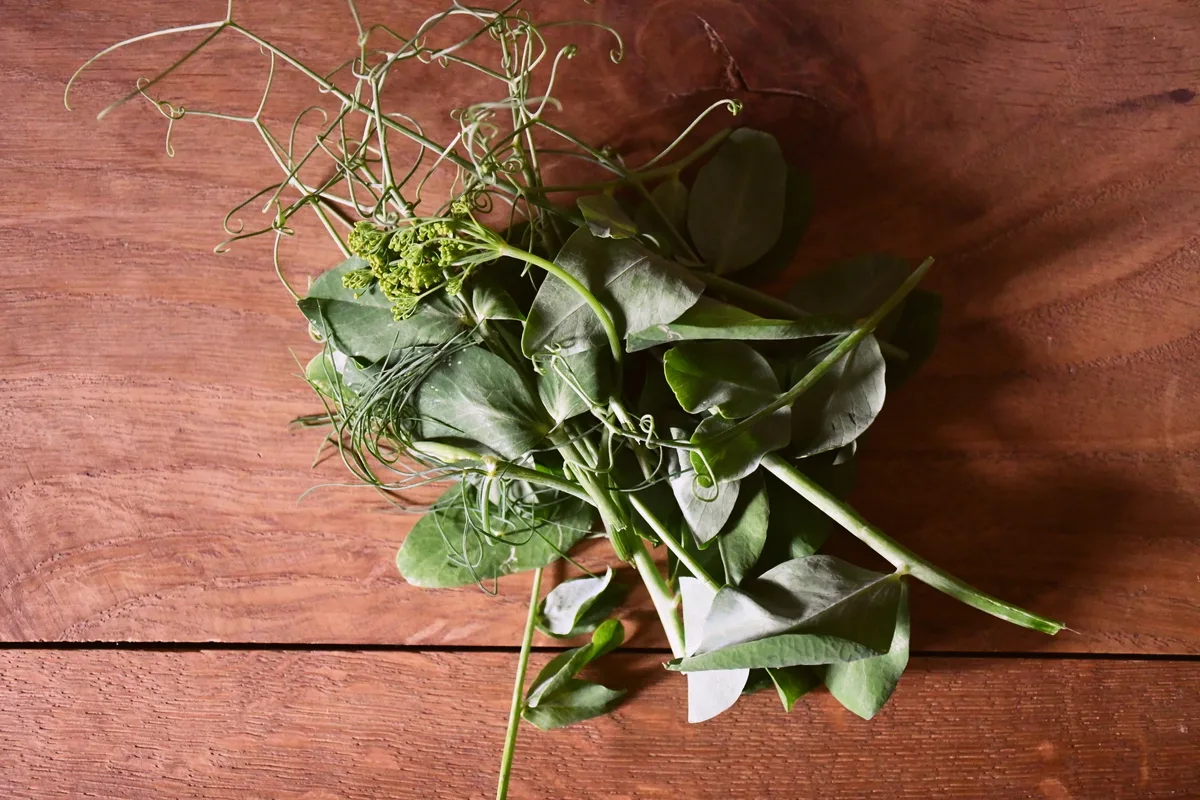
Long before you actually harvest round peas in their pods is the best time for snipping back some tendrils when they are young and tender. You don’t have to wait three months to harvest anything. In fact, you can start plucking off a leaf or two here and there as soon as the plant is big enough to let go of a few (at least 6 inches tall).
You can harvest pea shoots and tendrils at any time of day, though you’ll probably find them the most crisp in the morning. Just to be clear, eating pea shoots is akin to eating micro-greens. The youngest plants are chock full of nutrients and antioxidants, including vitamins A and C. Only eat what’s tender, never what’s woody or tough. Let your tongue be your guide.
If it turns out that you truly enjoy eating pea greens, you may not even care whether or not the pods come to maturity.
Keep it simple: keep harvesting the leaves and tips until the plant becomes bitter or less palpable than earlier in the season.
Preparing Pea Shoots and Leaves for Cooking
It’s easy enough to pluck any part of the pea plant by hand. After that, give the greens a quick rinse, using a salad spinner if you have one, or simply give them a quick back and forth under running water and shake them dry.
Since they are growing in your garden, pick only as much as you are going to eat in one day. Harvest as often as you need them in the kitchen.
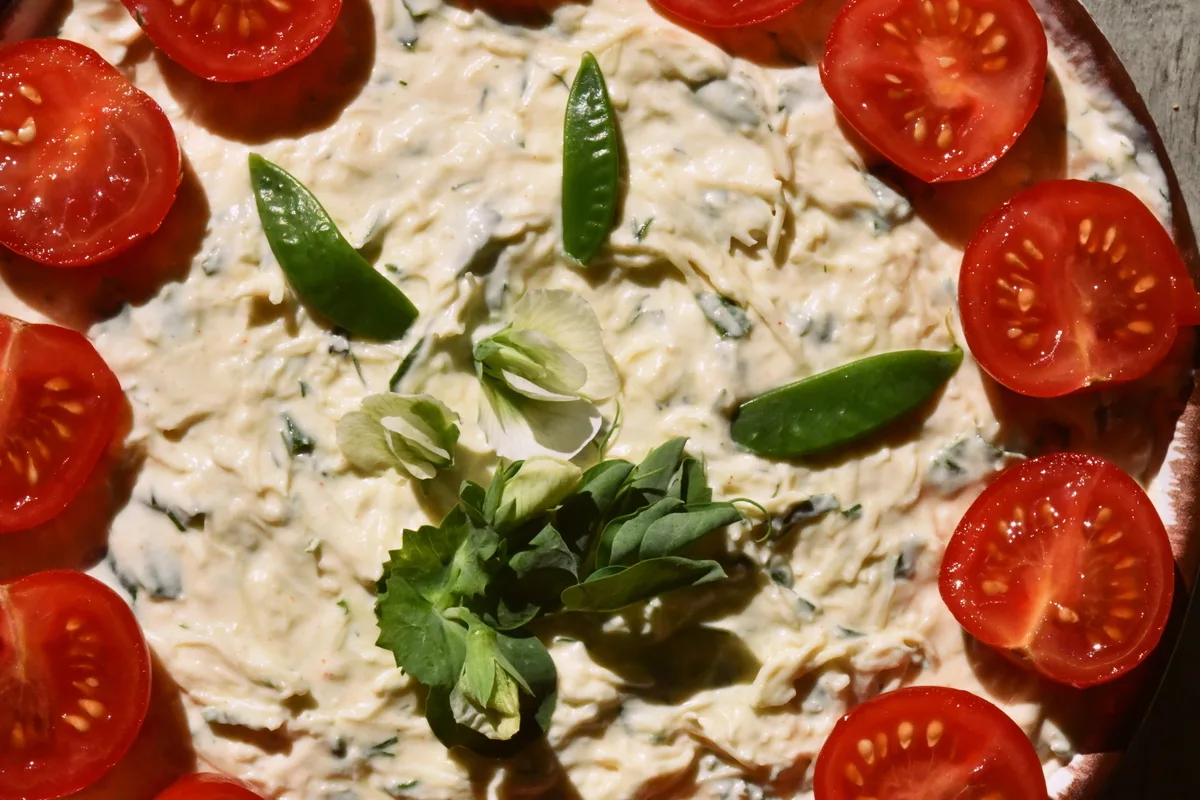
Our New Favorite Ways to Eat Pea Leaves
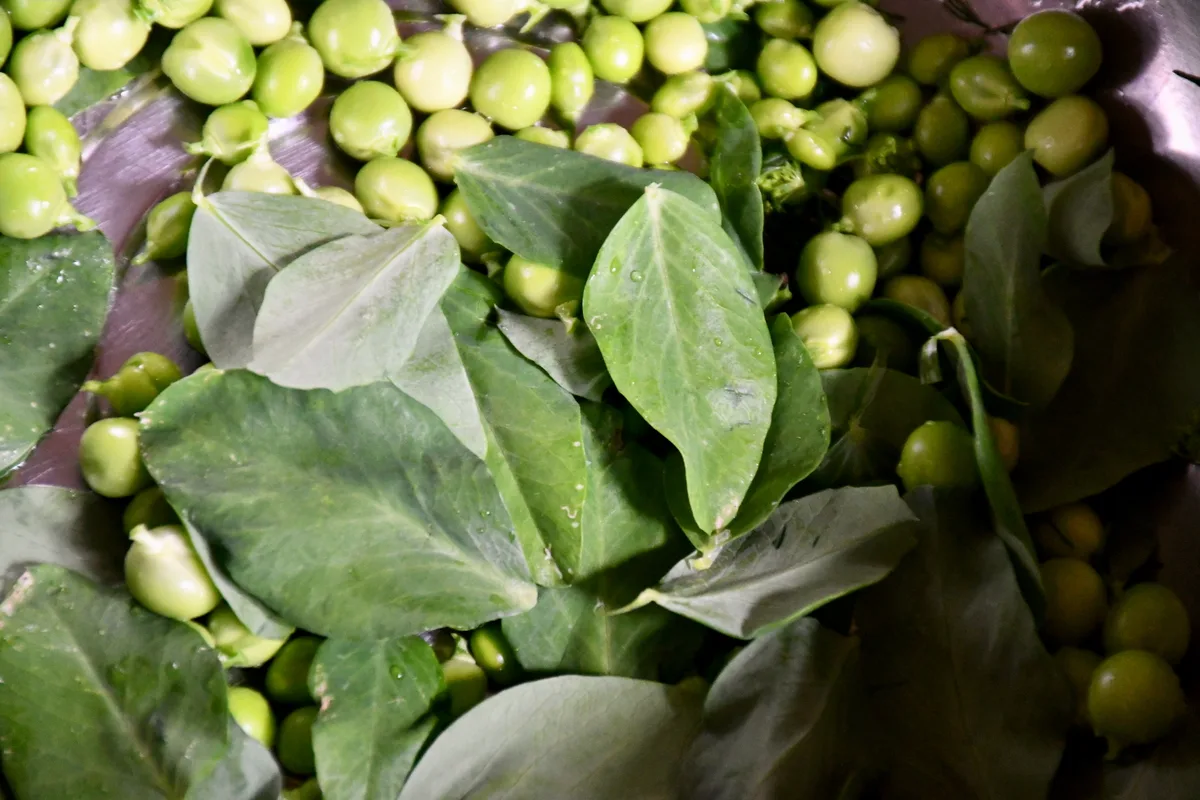
This is the first year we’ve ever eaten pea leaves. What took us so long? A few years ago, we discovered the deliciousness that is foraged hop shoots, but with peas, I don’t really know what happened.
One morning I was in the garden, looking at ways I could spice up a breakfast of bacon and eggs. The pea leaves were calling out to me, saying, “What about us? Why don’t you give us a try.” From that moment on, I haven’t looked at, or heard, the garden the same way again.
There aren’t a lot of recipes for using pea leaves outside of stir-fried snow pea leaves with garlic, which is amazing, by the way, so we’ve come up with a couple of our own.
Garden Veg & Pea Leaf Soup
A lot of homestead cooking happens with what one has on hand – or in the garden, so feel free to make your own modifications to either of the recipes below.
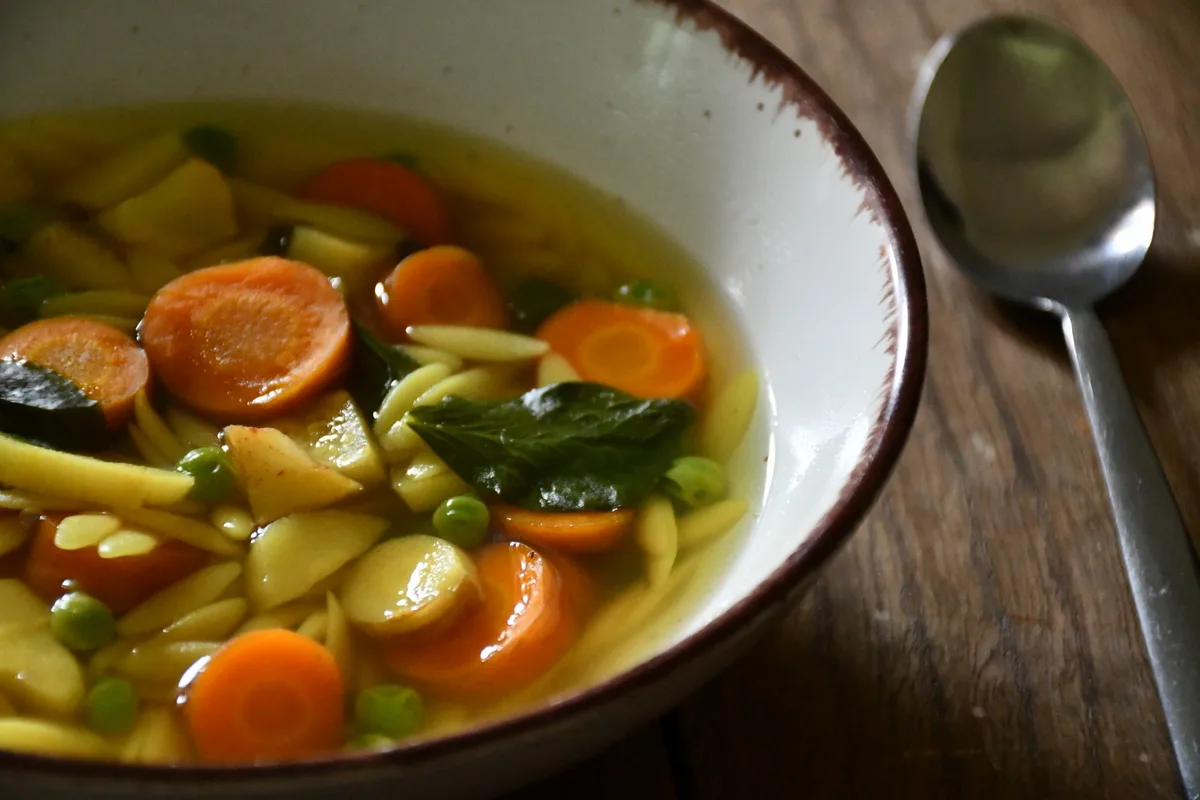
Ingredients:
- carrots
- celeriac
- parsley root
- peas and pea leaves
- pasta
- spices (such as oregano, basil, turmeric or paprika)
- salt and pepper
- oil, lard or any kind of poultry fat
Instructions:
- Prepare vegetables: slice or dice them any way you want. Could also add zucchini or new potatoes if they are ready to harvest. Garlic and onions are a great addition too.
- Toss carrots and other root vegetables into a pot, along with water, oil, salt and spices. Bring to a boil and cook till almost tender.
- Add pasta approximately 10 minutes prior to being done. At the same time, add the fresh peas.
- When you remove the pot of soup from the stove, add the pea leaves and let it sit for ten minutes before serving.
Use any amounts you like based on what you have at the moment.
Pea Leaf Dip
Since pea leaves can also be eaten raw (they are quite delicious), I included them in a cheesy-sour cream dip.
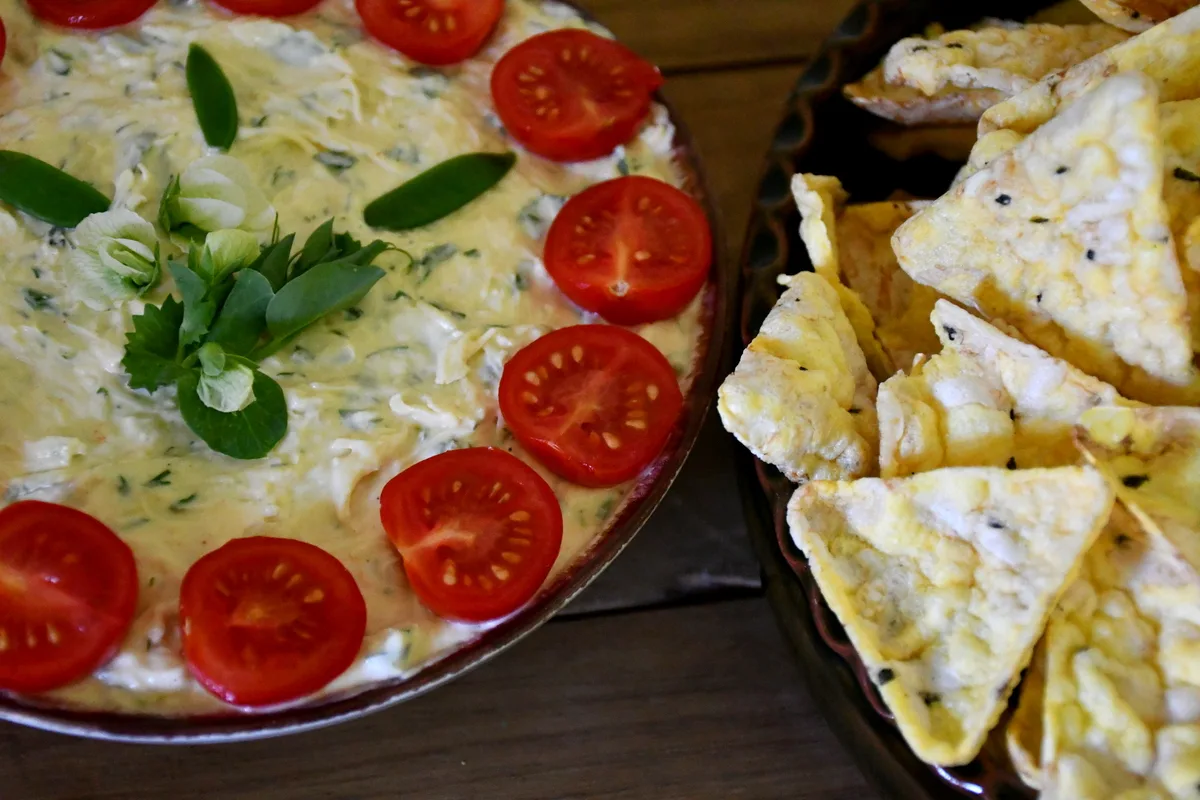
Ingredients:
- 2 cups sour cream
- 1 cup finely shredded cheese (Emmental or Swiss tastes wonderful)
- 1 cup finely chopped pea leaves
- finely chopped green onion, to taste
- salt, pepper, dill (fresh or dried) and paprika to taste
Instructions:
- Grate cheese and stir in sour cream.
- Stir in washed and chopped pea leaves.
- Add salt and spices.
- Serve with fresh tomatoes, young pea pods, pea flowers and tortillas.
Note that pea leaves can be added to any of your favorite dips. They’ll be tucked in there so nicely; kids or men won’t even notice. Or maybe they’ll be happy to eat something exotic. Either way, cheesy dips are tasty; indulge in them all you want.
Other Ways to Eat Pea Shoots and Leaves
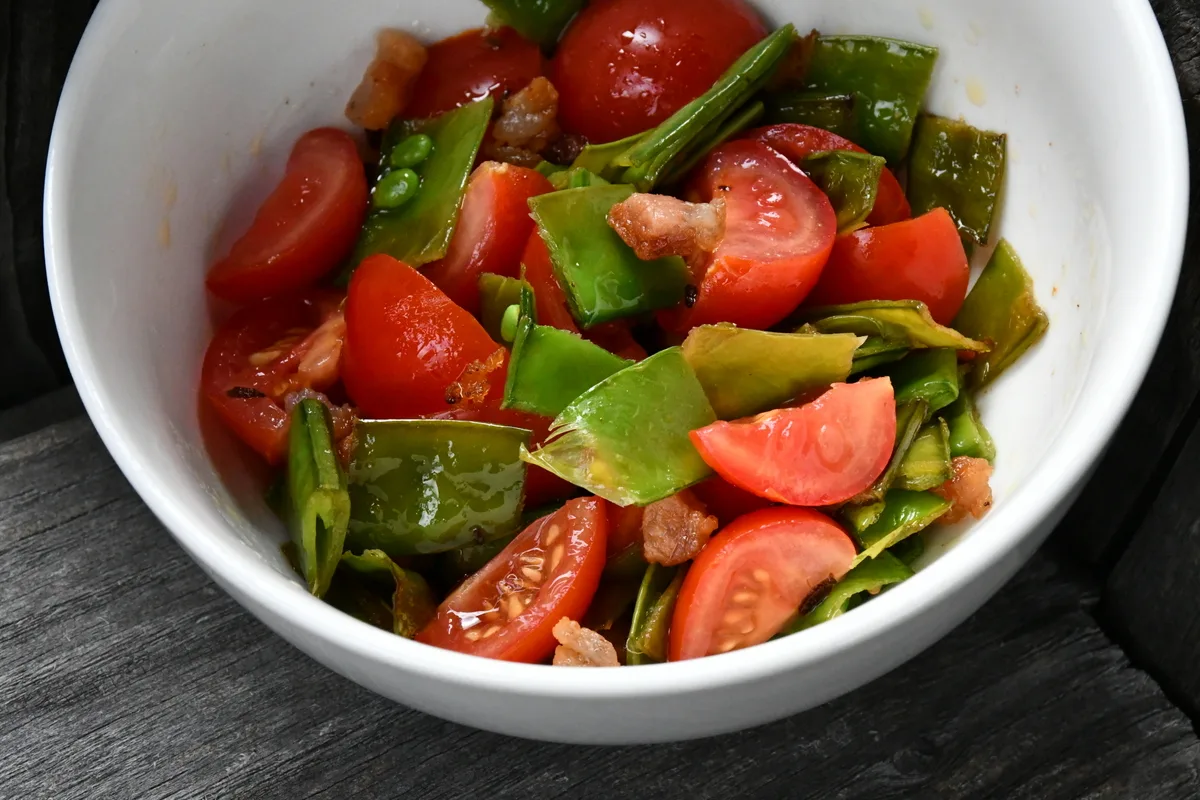
Pea leaves and shoots can be added to:
- any kind of soups or stews
- sandwiches
- stir-fries
- egg dishes
- biscuits and bread
- or sautéed in butter and served as a side dish
Pea greens can also be boiled or steamed, and from now on, at least on our homestead, they will always be eaten. Once you know, you know. What else can we find to eat in our little garden?

Get the famous Rural Sprout newsletter delivered to your inbox.
Including Sunday musings from our editor, Tracey, as well as “What’s Up Wednesday” our roundup of what’s in season and new article updates and alerts.

